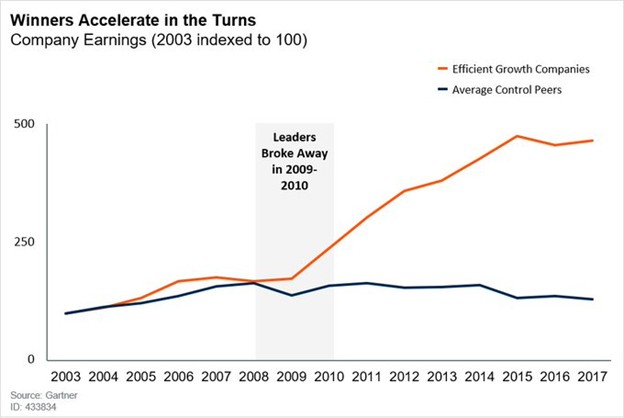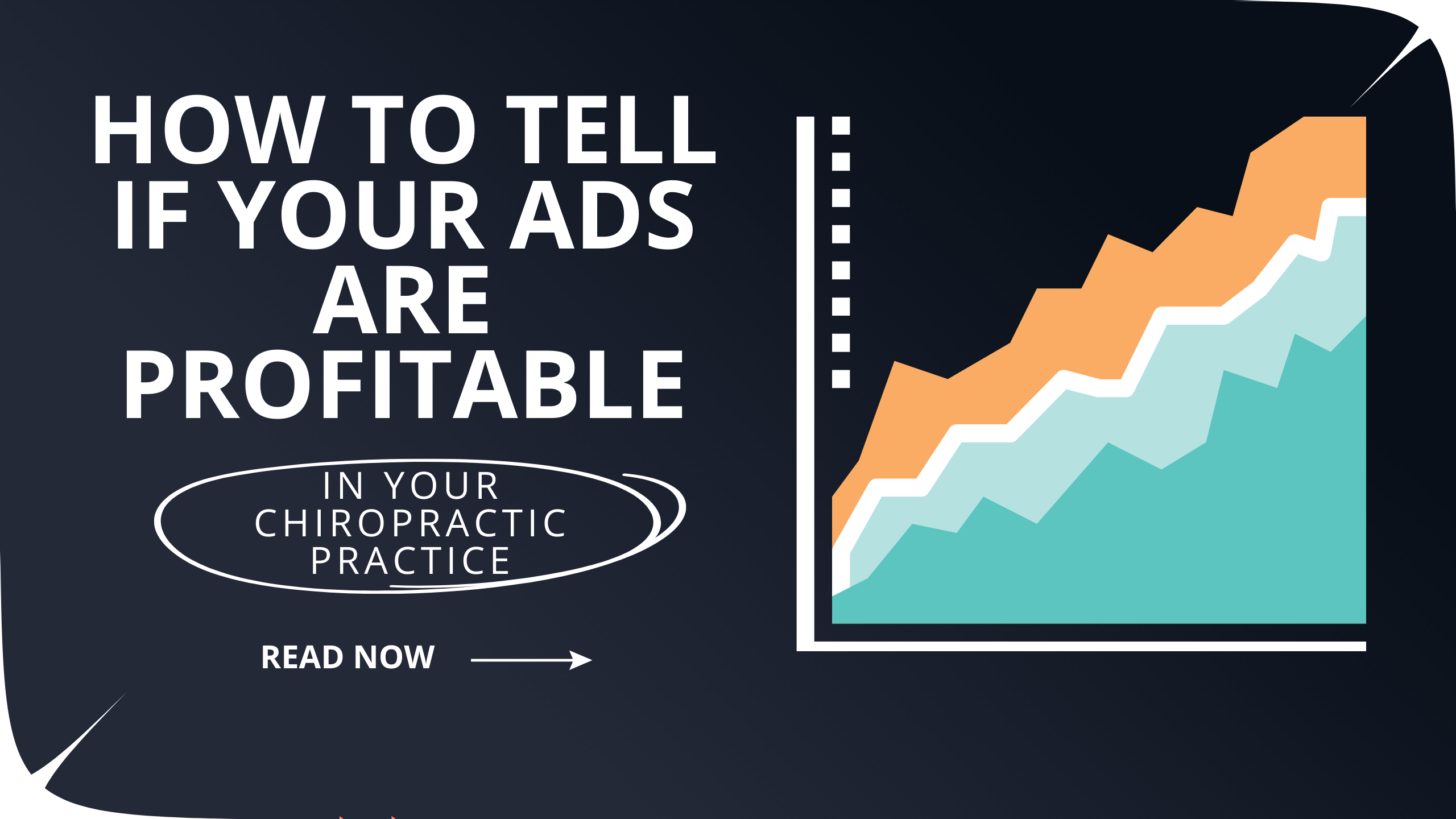I’ve seen some themes recently that have led chiropractors to misjudging how profitable ads are and can be. This leads to prematurely shutting off ads or never starting them—either way missing out on tons of new business.
Let’s jump into what these problems are and how we can overcome them.
The categories of tracking ads fall into 3 large categories. Ideally, you want to be in the 3rd category.
Stage 1
Stage 1 is where chiropractors:
- Think of advertising as an expense, not an investment.
- Don’t track anything.
The problem with thinking of advertising as an expense is that you don’t have a number to compare it to. Expenses are something that you always want to decrease—but if we are getting a set return from our ads, decreasing our input also decreases our output.
Let’s put it into context: Let’s say you spend $1,000 on ads to get 10 new patients. If you look at the overall context (which requires tracking something), you can see our advertising is effective.
However, if you only look at the amount you’re spending on ads, you can easily get into the mindset that it’s “too much” and decrease the amount. Let’s say you cut it from $1,000 to $500. Now you go from 10 new patients to 5 new patients. If our goal is to get as many new patients as possible, this isn’t good. If we ever want to cut our advertising budget, we should have a really good reason to do it. Cutting it because “the number looks too big” is not a good reason (we’ll go over better reasons later).
Looking at it as an expense is a mindset problem that people can fall into at any time. It leads to not tracking results, which causes problems down the whole chain. Obviously, if we don’t track anything, we don’t know what our return is. If you ever start thinking that way, just remember to look at your overall return (which means start tracking your numbers so you know what that is!).
Stage 2
In stage 2:
- Advertising is thought of as an investment AND
- We track the new patients we’re getting from it.
Thinking of advertising as an investment means we can calculate our return to make sure our advertising is working (and worth our time and money).
In order to do this, we want to track the number of new patients we’re getting. This is a great first step, but we’ll want to do better later.
The problem with only tracking new patients is that it doesn’t give us the full context. Let’s go back to our example. Let’s say you spend $1,000 to get 10 new patients. Let’s also say your average appointment price is $50.
This means that you get 10 * $50 = $500 in revenue. Which means you lose $500 from the advertising cost.
If we look at it this way, we’d obviously wonder to ourselves: “Why am I doing this? I’m just losing money every month!”
The other thought is “I need more new patients from this!” The problem is that you will almost never get enough new patients (first appointments) to make your advertising profitable.
This may sound like a bummer, but don’t worry. We’re going in the right direction. We just need a few more numbers to track to see how profitable our advertising really is.
That brings us to Stage 3:
Stage 3
In Stage 3, we:
- Think of advertising as an investment, AND
- Track the number of new patients we’re getting, AND
- Track our patient visit average (to get lifetime value)
When we add in our patient visit average, here’s what the math becomes:
$1,000 in advertising gets us 10 new patients (that stays the same). We still have $50/appointment.
However, our PVA is 10.
Now, our math looks like this: 10 new patients X 10 visits X $50/appointment = $5,000.
This means that our math goes from looking like it’s losing us $500 every month to profiting us $4,000 every month. This is an awesome spot to be at!
If we want to get even more specific, then there are some other numbers (aside from PVA) that we’d want to get:
- Average treatment plan size
- Average treatment plan completion rate
As an example, let’s say you go back through all the treatment plans you’ve ever recommended (you probably don’t need to do this, just get a sample size for a rough estimate) and find that the average treatment plan size is 10 appointments over 30 days.
You then look at the average completion rate and find that it’s 80%. So, that means that your average treatment plan is effectively 8 appointments. The other 2 appointments from the 10 PVA happen over the rest of the year.
So, this means that in the first 30 days, your math is: 10 new patients X 8 visits X $50/appointment = $4,000. Over the full year, we get an additional $1,000.
Again, this is a great spot to be at. We have positive cash flow in the first 30 days and can scale our ads as much as we want. We don’t have to worry about managing our cash super well (at least when it comes to ads) because we always have positive cash flow in the first 30 days.
Now, if we want to scale, we just add more money into the front or make our ads more efficient. For example, if you want to hit $10,000/month (sticking with our same example), then we increase ad spend to $2,000/month. Over the course of the year, you’ll make an average of $10,000/month.
When Should We Decrease Ad Spend?
The main question we should ask ourselves is: If our ads are working and always getting us a return, then why would we ever decrease ad spend? Usually, the only logical answer to this question is that you run into capacity issues.
(Obviously, if our ads aren’t working and giving us a consistent return, then we should keep testing until we find a strategy that does give us a consistent return. Once we find that strategy, though, it doesn’t make much sense to decrease ad spend.)
For example, if you’re spending $1,000/month on ads and getting 10 new patients/month, but you get to the point you can only handle 5/month, then decreasing ad spend makes sense.
Similarly, if we find a new strategy that doubles the effectiveness of our ads (taking us from 10 new patients to 20 new patients for the same ad spend), if you can only handle 10 new patients, it again makes sense to decrease ad spend.
However, it does not make sense to decrease ad spend because “the number seems too big.” Even during recessions, it can make sense to keep (or increase) your ad spend.
Gartner has conducted a few studies on this and found that companies that kept or increased their marketing spend during recessions recovered market share much faster and were more likely to pass their competition after the recession. So, if you decrease advertising, make sure to have a logical reason for doing so.

Conclusion
Those are the 3 stages I’ve noticed chiropractors tend to go through to figure out if their ads are profitable—which stops them from getting profitable ads. If you’re running ads, try to get to the 3rd stage—it’ll make everything a lot easier and clearer.
Our goal is to help chiropractors make more money. You already went to school to be a doctor—but you didn’t get the business training necessary to run a successful practice. That’s what we help with.
If you’d like help with stuff like that, then just book a free call here. We’ll give you a free marketing strategy session and plan for your specific practice that you can use to take your practice to the next level. If you decide to work with us, awesome! But either way, you’ll end up with a clear way to grow your practice.

